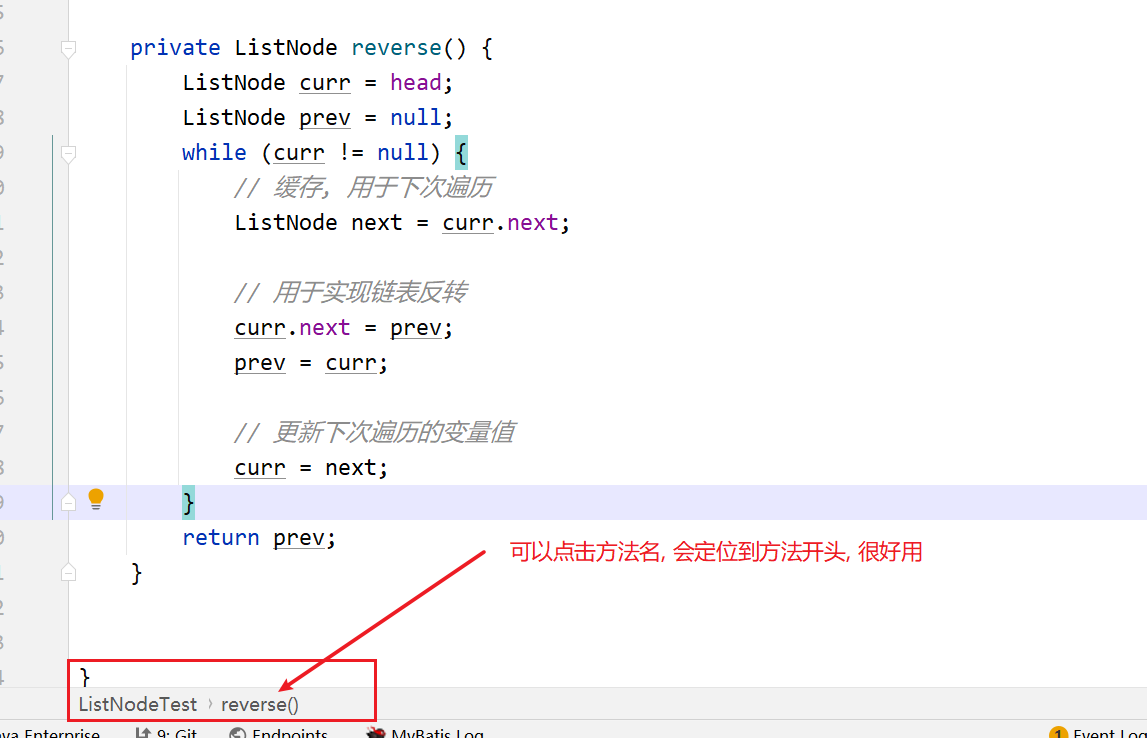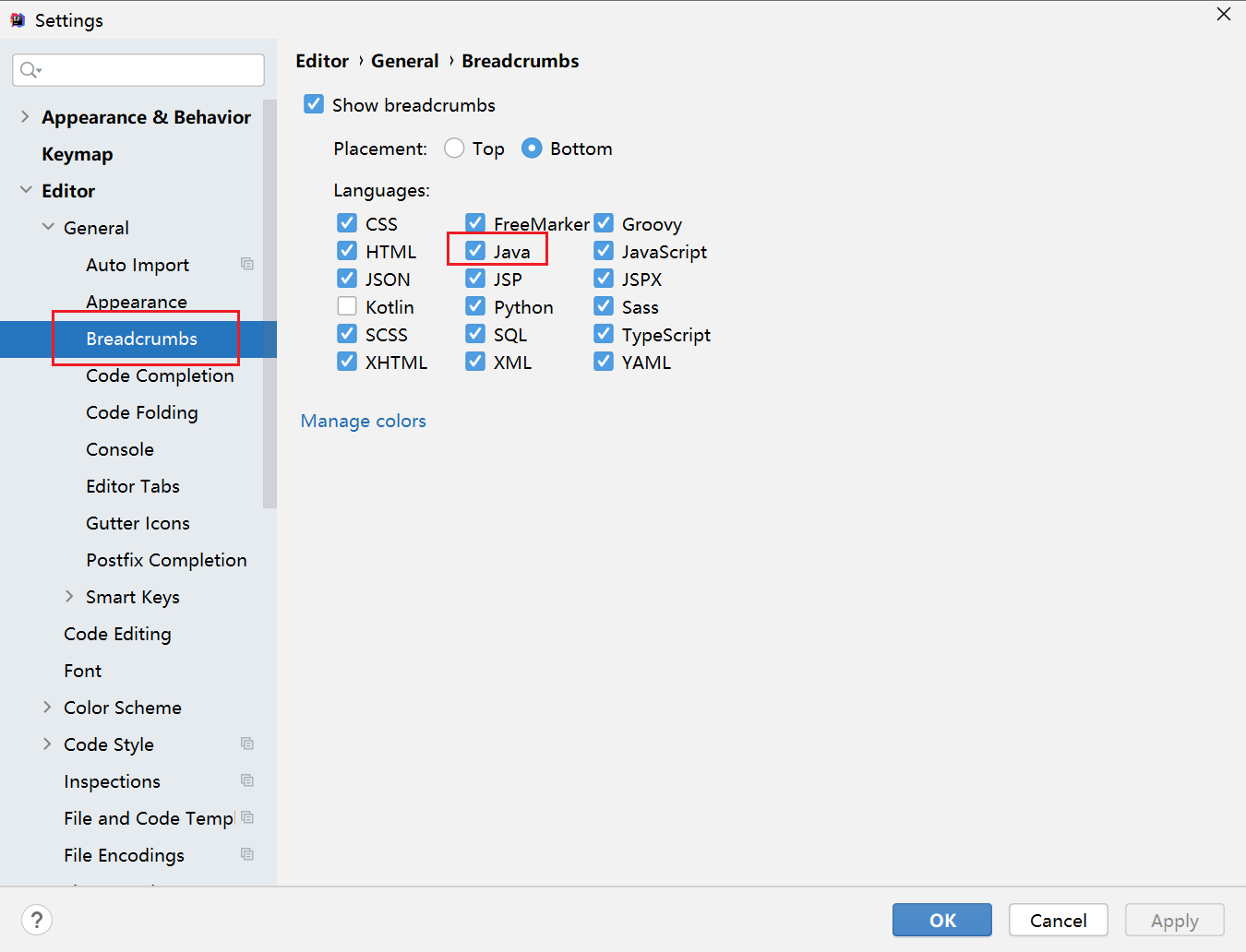idea 如何配置 java 的面包屑导航
本文共 138 字,大约阅读时间需要 1 分钟。
面包屑导航: 可以展示当前光标所在的方法, 用于快速确认当前所在方法和定位当前所在方法的开头

在之前的版本中, idea 该面包屑导航是开启的, 在 2020 版本后, 默认是关闭状态
editor > general > breadcrumbs > 勾选 java > ok
转载地址:http://gpcg.baihongyu.com/
你可能感兴趣的文章
NetApp凭借领先的混合云数据与服务把握数字化转型机遇
查看>>
NetBeans IDE8.0需要JDK1.7及以上版本
查看>>
netcat的端口转发功能的实现
查看>>
netfilter应用场景
查看>>
netlink2.6.32内核实现源码
查看>>
Netpas:不一样的SD-WAN+ 保障网络通讯品质
查看>>
NetScaler的常用配置
查看>>
netsh advfirewall
查看>>
NETSH WINSOCK RESET这条命令的含义和作用?
查看>>
Netty WebSocket客户端
查看>>
netty 主要组件+黏包半包+rpc框架+源码透析
查看>>
Netty 异步任务调度与异步线程池
查看>>
Netty中集成Protobuf实现Java对象数据传递
查看>>
Netty事件注册机制深入解析
查看>>
Netty原理分析及实战(四)-客户端与服务端双向通信
查看>>
Netty和Tomcat的区别已经性能对比
查看>>
Netty客户端断线重连实现及问题思考
查看>>
Netty工作笔记0006---NIO的Buffer说明
查看>>
Netty工作笔记0007---NIO的三大核心组件关系
查看>>
Netty工作笔记0011---Channel应用案例2
查看>>